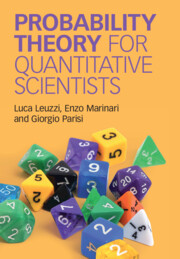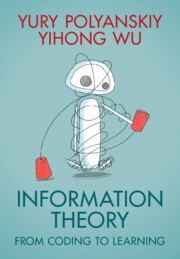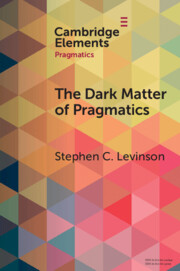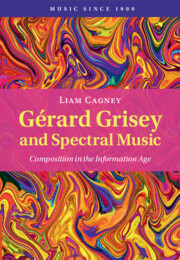Refine search
Actions for selected content:
66 results
3 - Queueing Theory and Resource Allocation
-
- Book:
- Insight-Driven Problem Solving
- Published online:
- 21 October 2025
- Print publication:
- 30 October 2025, pp 111-139
-
- Chapter
- Export citation
How detailed do measures of bilingual language experience need to be? A cost–benefit analysis using the Q-BEx questionnaire
-
- Journal:
- Bilingualism: Language and Cognition , First View
- Published online by Cambridge University Press:
- 12 September 2025, pp. 1-12
-
- Article
-
- You have access
- Open access
- HTML
- Export citation
14 - Entropy, Probability, and Statistical Mechanics
-
- Book:
- Probability Theory for Quantitative Scientists
- Published online:
- 24 July 2025
- Print publication:
- 14 August 2025, pp 357-396
-
- Chapter
- Export citation
Chapter 4 - Book Size and Information Management
-
- Book:
- How the World Became a Book in Shakespeare's England
- Published online:
- 09 August 2025
- Print publication:
- 14 August 2025, pp 120-159
-
- Chapter
- Export citation

Probability Theory for Quantitative Scientists
-
- Published online:
- 24 July 2025
- Print publication:
- 14 August 2025
How Linguistics Learned to Stop Worrying and Love the Language Models
-
- Journal:
- Behavioral and Brain Sciences / Accepted manuscript
- Published online by Cambridge University Press:
- 24 July 2025, pp. 1-98
-
- Article
-
- You have access
- Export citation
Disentangling coexisting sensory pathways of interaction in schooling fish
-
- Journal:
- Flow: Applications of Fluid Mechanics / Volume 5 / 2025
- Published online by Cambridge University Press:
- 14 May 2025, E16
-
- Article
-
- You have access
- Open access
- HTML
- Export citation
8 - The Asymptotic Regime
- from Part II - Tools and Methods
-
- Book:
- Quantum Resource Theories
- Published online:
- 03 May 2025
- Print publication:
- 10 April 2025, pp 352-400
-
- Chapter
- Export citation
Chapter 15 - Reducing Surprisal and Entropy
- from Part III - Mathematical Theories
-
- Book:
- Looking Ahead
- Published online:
- 20 March 2025
- Print publication:
- 06 March 2025, pp 163-173
-
- Chapter
- Export citation

Information Theory
- From Coding to Learning
-
- Published online:
- 09 January 2025
- Print publication:
- 02 January 2025
-
- Textbook
- Export citation
Global Convergence of the EM Algorithm for Unconstrained Latent Variable Models with Categorical Indicators
-
- Journal:
- Psychometrika / Volume 78 / Issue 1 / January 2013
- Published online by Cambridge University Press:
- 01 January 2025, pp. 134-153
-
- Article
- Export citation
8 - Communication and Information Theory of Molecular Communication
-
- Book:
- Molecular Communication
- Published online:
- 12 December 2024
- Print publication:
- 19 December 2024, pp 135-159
-
- Chapter
- Export citation
Optimal experiment design with adjoint-accelerated Bayesian inference
-
- Journal:
- Data-Centric Engineering / Volume 5 / 2024
- Published online by Cambridge University Press:
- 31 May 2024, e17
-
- Article
-
- You have access
- Open access
- HTML
- Export citation

The Dark Matter of Pragmatics
- Known Unknowns
-
- Published online:
- 12 March 2024
- Print publication:
- 11 April 2024
-
- Element
-
- You have access
- Open access
- HTML
- Export citation
2 - Messiaen’s Class and New Music in Late 1960s Paris (1967–1970)
- from Part I - Grisey’s Style
-
- Book:
- Gérard Grisey and Spectral Music
- Published online:
- 30 November 2023
- Print publication:
- 14 December 2023, pp 34-68
-
- Chapter
- Export citation
6 - L’Itinéraire and Synthetic Music (1973–1976)
- from Part II - Spectral Music
-
- Book:
- Gérard Grisey and Spectral Music
- Published online:
- 30 November 2023
- Print publication:
- 14 December 2023, pp 157-196
-
- Chapter
- Export citation
Conclusion
-
- Book:
- Gérard Grisey and Spectral Music
- Published online:
- 30 November 2023
- Print publication:
- 14 December 2023, pp 261-269
-
- Chapter
- Export citation
7 - New Dimensions (1976–1978)
- from Part II - Spectral Music
-
- Book:
- Gérard Grisey and Spectral Music
- Published online:
- 30 November 2023
- Print publication:
- 14 December 2023, pp 197-233
-
- Chapter
- Export citation
Introduction
-
- Book:
- Gérard Grisey and Spectral Music
- Published online:
- 30 November 2023
- Print publication:
- 14 December 2023, pp 1-10
-
- Chapter
- Export citation

Gérard Grisey and Spectral Music
- Composition in the Information Age
-
- Published online:
- 30 November 2023
- Print publication:
- 14 December 2023
